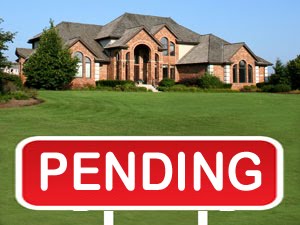Yesterday, the National Association of Realtors (NAR) said that there was an increase of 8.2 percent, for a “Pending Home Sales Index” (PHSI) of 88.8 in May, as anticipated by economists. Overall, all areas saw an increase from a year ago, when the index was 78.3.

The index tracks contract signings, but not closings, serving as a “forward-looking indicator”– one which portrays the likely probability that sales are on the rise.
“This is the first time since April 2010 that contract activity was above year-ago levels, and the monthly gain was the strongest increase since last November when the index rose 10.6 percent,” said NAR in the report.
This is welcome news after April’s reading of 82.1, which had been a seven-month low, according to eWire Informer.
“Absorption of inventory is the key to price improvement, and this solid gain in contract signings implies that home values in many localities are or will soon be stabilizing as inventories get absorbed at a faster pace,” said Lawrence Yun, NAR chief economist, in the report.
“Some markets have made a rapid turnaround, going from soft activity to contract signings rising by more than 30 percent from a year ago, including areas such as Hartford, Conn.; Indianapolis; Minneapolis; Houston; and Seattle,” added Yun. Houston likely has the benefit of a strengthening job market assisting their stabilizing market.
Yun, along with many others, believes that the difficulty of getting a loan, the inability to complete foreclosure deals, and the current job market are largely preventing the housing sector from recovery.
The region experiencing the greatest PHSI increase since May 2010 was the Midwest, with an increase of 17.2 percent to 82.8, followed by the South with an increase of 14.6 percent to 95.0; the West experienced an increase of 13.5 percent since last year to an index of 100.6 and the Northeast saw a rise of 4.4 percent to 69.2.
While the Northeast’s yearly increase was slight, the area’s activity was up 7.3 percent from April. The West fared the best, with a monthly increase of 12.9 percent, the Midwest experienced a 10.5 percent hike, and the South had a 4.1 percent increase for the month.
